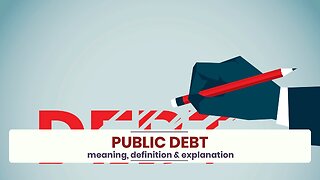Premium Only Content

What is DIGITAL PRINTING?
✪✪✪✪✪
http://www.theaudiopedia.com
✪✪✪✪✪
What does DIGITAL PRINTING mean? DIGITAL PRINTING meaning - DIGITAL PRINTING definition - DIGITAL PRINTING explanation. What is the meaning of DIGITAL PRINTING? What is the definition of DIGITAL PRINTING? What does DIGITAL PRINTING stand for? What is DIGITAL PRINTING meaning? What is DIGITAL PRINTING definition?
Digital printing refers to methods of printing from a digital-based image directly to a variety of media. It usually refers to professional printing where small-run jobs from desktop publishing and other digital sources are printed using large-format and/or high-volume laser or inkjet printers. Digital printing has a higher cost per page than more traditional offset printing methods, but this price is usually offset by avoiding the cost of all the technical steps required to make printing plates. It also allows for on-demand printing, short turnaround time, and even a modification of the image (variable data) used for each impression. The savings in labor and the ever-increasing capability of digital presses means that digital printing is reaching the point where it can match or supersede offset printing technology's ability to produce larger print runs of several thousand sheets at a low price.
The greatest difference between digital printing and traditional methods such as lithography, flexography, gravure, or letterpress is that there is no need to replace printing plates in digital printing, whereas in analog printing the plates are repeatedly replaced. This results in quicker turnaround time and lower cost when using digital printing, but typically a loss of some fine-image detail by most commercial digital printing processes. The most popular methods include inkjet or laser printers that deposit pigment or toner onto a wide variety of substrates including paper, photo paper, canvas, glass, metal, marble, and other substances.
In many of the processes, the ink or toner does not permeate the substrate, as does conventional ink, but forms a thin layer on the surface that may be additionally adhered to the substrate by using a fuser fluid with heat process (toner) or UV curing process (ink).
Fine art digital inkjet printing is printing from a computer image file directly to an inkjet printer as a final output. It evolved from digital proofing technology from Kodak, 3M, and other major manufacturers, with artists and other printers trying to adapt these dedicated prepress proofing machines to fine-art printing. There was experimentation with many of these types of printers, the most notable being the IRIS printer, initially adapted to fine-art printing by programmer David Coons, and adopted for fine-art work by Graham Nash at his Nash Editions printing company in 1991. Initially, these printers were limited to glossy papers, but the IRIS Graphics printer allowed the use of a variety of papers that included traditional and non-traditional media. The IRIS printer was the standard for fine art digital printmaking for many years, and is still in use today, but has been superseded by large-format printers from other manufacturers such as Epson and HP that use fade-resistant, archival inks (pigment-based, as well as newer solvent-based inks), and archival substrates specifically designed for fine-art printing.
Substrates in fine art inkjet printmaking include traditional fine-art papers such as Rives BFK, Arches watercolor paper, treated and untreated canvas, experimental substrates (such as metal and plastic), and fabric.
For artists making reproductions of their original work, inkjet printing is more expensive on a per-print basis than the traditional four-color offset lithography, but with inkjet printing the artist does not have to pay for the expensive printing-plate setup or the marketing and storage needed for large four-color offset print runs. Inkjet reproductions can be printed and sold individually in accordance with demand. Inkjet printing has the added advantage of allowing artists to take total control of the production of their images, including the final color correction and the substrates being used, with some artists owning and operating their own printers.
Digital inkjet printing also allows for the output of digital art of all types as finished pieces or as an element in a further art piece. Experimental artists often add texture or other media to the surface of a final print, or use it as part of a mixed-media work. Many terms for the process have been used over the years, including "digigraph" and "giclée". Thousands of print shops and digital printmakers now offer services to painters, photographers, and digital artists around the world.
-
 1:41
1:41
The Audiopedia
5 months agoWhat is PUBLIC DEBT?
47 -
 1:44:34
1:44:34
Tucker Carlson
4 hours agoTucker Carlson and Russ Vought Break Down DOGE and All of Trump’s Cabinet Picks So Far
120K173 -
 LIVE
LIVE
Flyover Conservatives
20 hours agoBO POLNY | The Best and Worst Times Are Coming – Are You Ready? | FOC Show
1,254 watching -
 51:12
51:12
BIG NEM
6 hours agoWelcome to Our Uncensored Show: Trump, Simulation Theory & the Albanian Mob - EP1
1216 -
 2:05:14
2:05:14
Robert Gouveia
5 hours agoFBI Criminals Get LAWYERS; STOP Counting ILLEGAL Votes; Time to Disbar Tish James
30.8K72 -
 1:00:30
1:00:30
The StoneZONE with Roger Stone
4 hours agoAre We Heading For World War III? General Michael Flynn Joins The StoneZONE w/ Roger Stone
19.5K2 -
 1:14:12
1:14:12
We Like Shooting
13 hours ago $0.35 earnedDouble Tap 384 (Gun Podcast)
4.43K -
 LIVE
LIVE
Tundra Gaming Live
6 hours ago $1.42 earnedThe Worlds Okayest War Thunder Stream
346 watching -
 1:20:47
1:20:47
Donald Trump Jr.
7 hours agoThe MAGA Cultural Shift, Plus UFC at MSG & Interview with Newt Gingrich | TRIGGERED Ep.192
133K152 -
 45:18
45:18
Kimberly Guilfoyle
7 hours agoBreaking News on Latest Cabinet Picks, Media Spins in Circles,Live with Tim Hentschel & Alex Epstein | Ep. 175
116K31